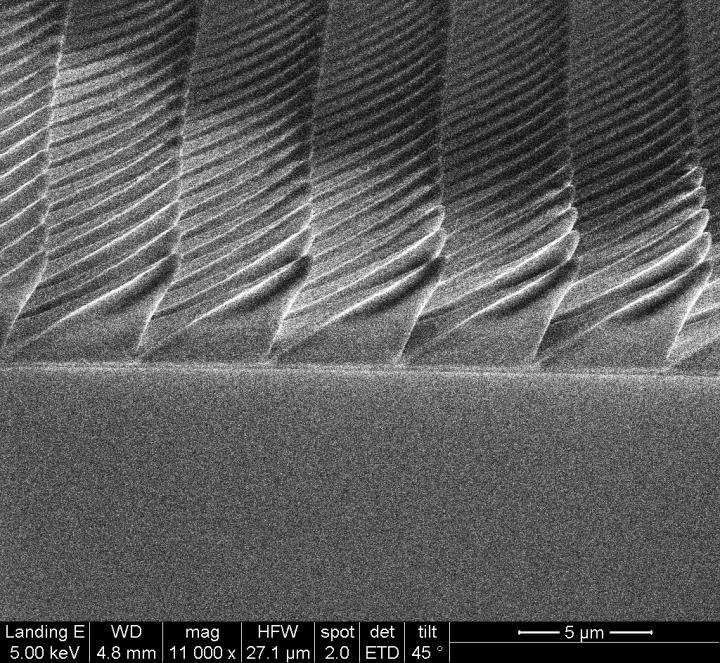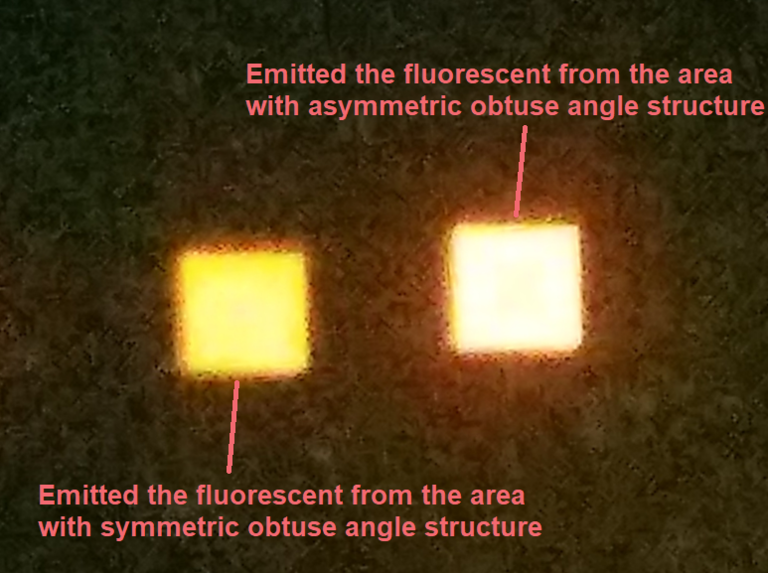Although LEDs are far more energy-efficient than incandescent bulbs, most commercial models are reportedly only about 50 percent efficient at emitting the light that they generate. This is known as their light extraction efficiency, and researchers have drastically increased it by copying fireflies.
Many existing LEDs have arrays of pyramid-like microstructures etched onto their surfaces, which help the generated light to be emitted from that surface, as opposed to being reflected back in by it. Fireflies also have such structures on their abdominal "lanterns," which serve the same purpose.
Recently, however, Pennsylvania State University doctoral student Chang-Jiang Chen discovered that unlike the microstructures on the LEDs, those on the insect were asymmetrical. He later found that the same was true of the light-emitting spots on a certain type of cockroach.
With that in mind, Chen and colleagues utilized nanoscale 3D printing technology to create arrays of microscopic lopsided pyramids (pictured below) on the surface of otherwise-conventional LEDs. When tested, those LEDs were found to have a light extraction efficiency of up to 90 percent.

According to the researchers, there are a couple of reasons for this increase. First of all, the asymmetric pyramids have more surface area than their symmetric counterparts, allowing for a greater interaction of light with the surface.
Secondly, when some of the light is reflected back in by the pyramids' two differently-angled slopes, those reflections are of a more random nature – this bounces the light around more, giving it another chance to escape the LED.

The scientists are now looking into collaborating with manufacturers to commercialize the microstructure application process, which they say could easily be added to existing LED production facilities.
A paper on the research, which was supervised by Prof. Stuart (Shizhuo) Yin, was recently published in the journal Optik.
Source: Penn State






